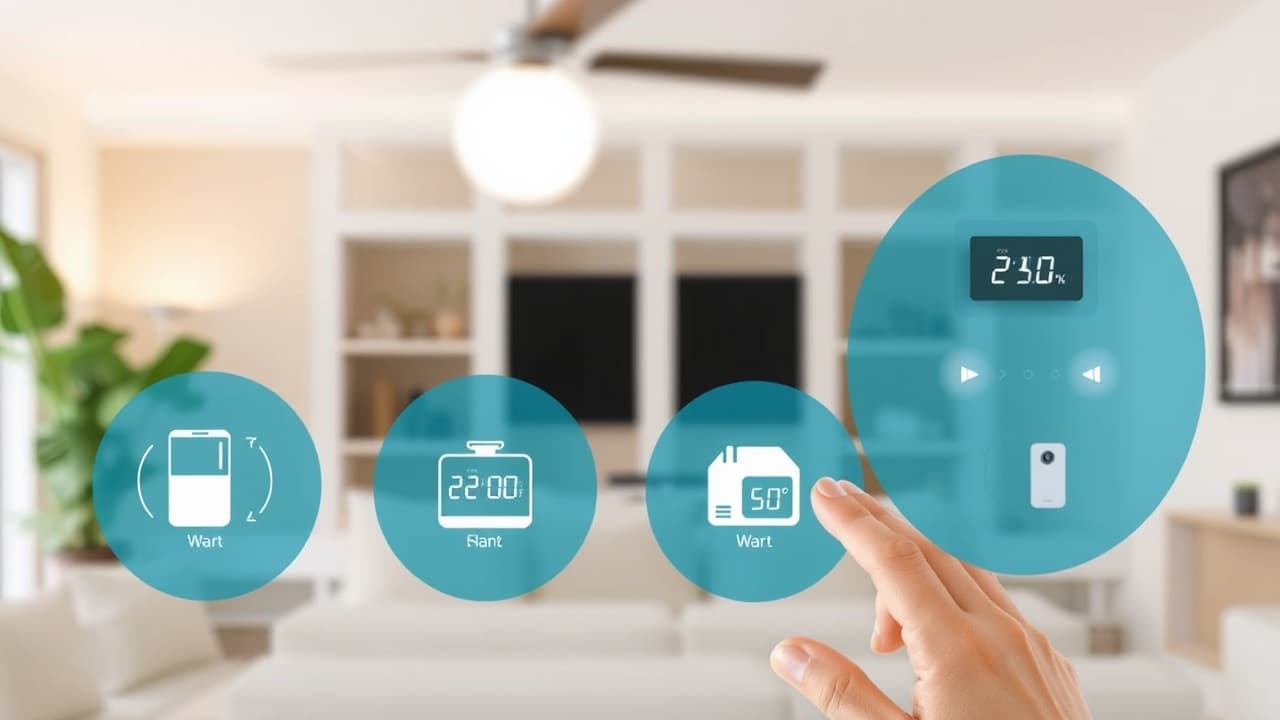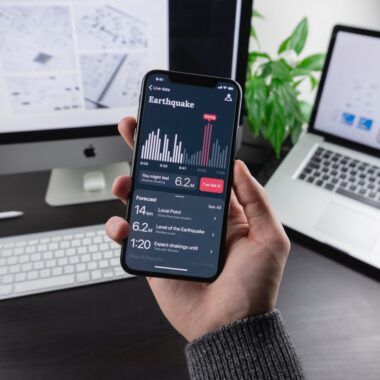Harnessing AI and IoT: Transforming Industries with Artificial Intelligence

In today’s rapidly evolving technological landscape, the convergence of Artificial Intelligence (AI) and the Internet of Things (IoT) is revolutionizing industries. As businesses harness the capabilities of AI and IoT technologies, they unlock new opportunities for automation, efficiency, and innovation. This article explores the fundamental concepts of AI and IoT, their integration, and how this powerful combination is transforming industries across the globe.
Understanding AI and IoT
What is Artificial Intelligence?
Artificial Intelligence (AI) represents a significant subfield of computer science dedicated to creating intelligent machines that can perform tasks typically requiring human intelligence. The capabilities of AI encompass a range of functions, including learning, reasoning, and problem-solving. Notably, AI technologies incorporate various approaches such as machine learning (ML), which enables systems to learn from historical data and progressively improve their performance. Within this spectrum, deep learning—a subset of ML—utilizes neural networks to analyze complex data sets. This proficiency in processing allows for a multitude of applications, such as natural language processing and image recognition. The integration of AI into the IoT ecosystem is essential, as it facilitates the extraction of valuable insights from the vast amounts of data generated by IoT devices, thereby enhancing automation and decision-making processes.
The Internet of Things Explained
The Internet of Things (IoT) refers to an expansive network of interconnected physical objects equipped with sensors, software, and technologies that enable them to collect and exchange data over the internet. These IoT devices range from simple household items like smart thermostats to intricate industrial machinery. The primary goal of IoT technology is to enhance data collection, processing, and analysis, thereby improving decision-making and automating processes. For instance, IoT sensors are capable of monitoring environmental factors such as temperature and humidity or tracking human behavior. The effectiveness of IoT systems relies on robust communication networks, which utilize technologies like Wi-Fi, Bluetooth, and cellular networks to facilitate data transmission and processing. Often, these systems leverage cloud computing and big data analytics to derive actionable insights, thereby amplifying the overall impact of the IoT environment.
AI and IoT: A New Era of Technology
The convergence of AI and IoT, frequently referred to as the Artificial Intelligence of Things (AIoT), is poised to reshape various industries by enabling the creation of smarter, more efficient systems. This integration empowers IoT devices to leverage AI algorithms for advanced data analysis, predictive maintenance, and automated decision-making. As the AIoT landscape continues to evolve, projections indicate significant growth, with the AIoT market expected to reach USD 168.8 billion by 2033. The combination of AI and IoT technologies not only enhances operational efficiency but also fosters innovation, paving the way for new business models and improved customer experiences. By utilizing AI-powered IoT devices, organizations can tap into the potential of AI, making informed decisions that drive success in an increasingly competitive market.
Benefits of AI and IoT Integration

Enhancing Operational Efficiency
The integration of AI with IoT significantly enhances operational efficiency across various industries. By implementing AI algorithms within IoT systems, businesses can automate routine processes, allowing for a more strategic allocation of human resources. For instance, in the manufacturing sector, AI can optimize production lines by analyzing real-time data generated by IoT sensors, which leads to reduced waste and improved productivity. In smart homes, AI learns user behaviors and adjusts settings automatically, maximizing energy efficiency. The ability to analyze vast amounts of data quickly and accurately enables organizations to make informed decisions, further streamlining operations and increasing overall efficiency in the IoT ecosystem. Additionally, using a reliable VPN service like VPN Unlimited can ensure secure data transmission, protecting sensitive information from potential cyber threats.
Cost Reduction through AI and IoT
The integration of AI and IoT technologies leads to substantial cost savings for organizations across various sectors. By utilizing predictive maintenance, businesses can anticipate equipment failures before they occur, thus avoiding costly downtime and repair expenses that can arise from unexpected breakdowns. AI-powered IoT devices can analyze performance data to optimize energy consumption, resulting in lower utility bills and more efficient resource management. Furthermore, automating processes through AI reduces the need for manual labor, allowing companies to operate more efficiently and allocate resources effectively. The combination of these technologies not only minimizes operational costs but also enhances the bottom line for organizations leveraging AI and IoT.
Improved Decision Making
The synergy between AI and IoT significantly enhances decision-making capabilities within organizations, allowing them to navigate complex challenges more effectively. AI systems can process large volumes of data generated by IoT devices, providing actionable insights that inform strategic choices. For example, in the healthcare sector, AI can analyze data from wearable devices to identify potential health issues early, enabling proactive interventions and optimizing patient care. Similarly, in agriculture, AI can optimize crop yields by analyzing sensor data related to soil conditions and weather patterns. This data-driven approach not only improves accuracy in decision-making but also fosters agility, allowing organizations to respond swiftly to changing market conditions and capitalize on new opportunities.
Applications of AI in IoT
Smart Home Technologies
Smart home technologies are among the most visible applications of AI in IoT, enhancing convenience, security, and energy efficiency for consumers. Devices such as smart thermostats, lighting systems, and security cameras utilize AI algorithms to learn user preferences and behaviors, enabling automated adjustments and personalized experiences. For instance, a smart thermostat can optimize heating and cooling based on occupancy patterns, leading to significant energy savings. Moreover, AI-powered security systems can analyze video feeds in real-time, detecting unusual activities and alerting homeowners, thereby enhancing safety and peace of mind. The integration of AI in these IoT devices demonstrates how artificial intelligence can help create a smarter, more responsive living environment.
AI-Powered Industrial IoT Solutions
AI-powered Industrial IoT (IIoT) solutions are transforming manufacturing and industrial operations by enabling real-time monitoring and predictive maintenance. IIoT devices equipped with sensors collect vast amounts of data on machinery performance, which AI algorithms analyze to predict equipment failures and optimize maintenance schedules. This proactive approach minimizes downtime and extends the lifespan of critical assets. Additionally, AI can enhance quality control by analyzing production data to identify defects and inefficiencies, leading to improved product quality and operational efficiency. The integration of AI in IIoT not only boosts productivity but also fosters innovation in manufacturing processes, showcasing the powerful intersection of AI and IoT technologies.
Healthcare Innovations
In healthcare, the integration of AI and IoT is revolutionizing patient monitoring and care delivery. Wearable devices equipped with sensors can track vital signs and health metrics, transmitting real-time data to healthcare providers. AI algorithms analyze this data to identify patterns and detect anomalies, facilitating early intervention for chronic conditions. Furthermore, AI-driven telemedicine solutions enable remote consultations and personalized treatment recommendations, improving access to care. This combination of technologies enhances patient outcomes, reduces healthcare costs, and streamlines clinical workflows, ultimately transforming the healthcare landscape. The impact of AI and IoT in healthcare exemplifies how integrating AI with IoT provides innovative solutions to pressing challenges in patient care.
Examples of AI and IoT in Action
Real-World Case Studies
Numerous real-world case studies illustrate the successful integration of AI and IoT across various industries. For instance, in the manufacturing sector, companies are leveraging AIoT solutions to optimize production lines and reduce waste. One notable example is a leading automotive manufacturer that implemented predictive maintenance using IoT sensors and AI algorithms, resulting in a 20% reduction in downtime and significant cost savings. Similarly, in the retail industry, AI-powered inventory management systems are enabling businesses to track stock levels in real-time, improving replenishment processes and reducing stockouts. These case studies highlight the transformative potential of AI and IoT integration in driving operational efficiency and innovation.
Innovative Startups Leveraging AI and IoT
Innovative startups are at the forefront of leveraging AI and IoT technologies to develop cutting-edge solutions across various sectors. For example, a startup focused on smart agriculture has developed an AI-driven platform that utilizes IoT sensors to monitor soil conditions and optimize irrigation schedules, resulting in increased crop yields and resource efficiency. Another startup in the healthcare space is using AI-powered wearables to monitor patient health in real-time, enabling proactive interventions and personalized care. These startups exemplify how the combination of AI and IoT can lead to groundbreaking innovations and disrupt traditional business models.
Future Trends and Predictions
The future of AI and IoT integration is poised for significant advancements, with several trends emerging on the horizon. One key trend is the increasing adoption of edge computing, which allows AI algorithms to process data locally on IoT devices, reducing latency and enhancing privacy. Additionally, the rollout of 5G technology will enable faster data transmission and support a larger number of connected devices, further enhancing the capabilities of AIoT solutions. As industries continue to embrace digital transformation, we can expect to see AI and IoT driving innovation in areas such as smart cities, autonomous vehicles, and personalized healthcare, reshaping the way we live and work.
The Intersection of AI and IoT
How AI Enhances IoT Capabilities
AI significantly enhances the capabilities of IoT systems by enabling intelligent data analysis and decision-making. As IoT devices generate vast amounts of data, AI algorithms can process this information to identify patterns, anomalies, and insights that would be challenging for humans to detect. This allows IoT systems to operate autonomously, making real-time adjustments based on environmental conditions or user behaviors. For instance, in smart homes, AI can optimize energy usage by learning from occupants’ habits, while in industrial settings, AI can predict equipment failures, minimizing downtime and maintenance costs. The integration of AI empowers IoT devices to become more adaptive and efficient, ultimately improving their overall functionality.
Challenges in Integrating AI with IoT
Despite the numerous benefits of integrating AI with IoT, several challenges must be addressed for successful implementation. One major challenge is data management, as IoT devices generate vast amounts of data that must be stored, processed, and analyzed effectively. Additionally, security concerns arise due to the vulnerability of IoT devices to cyberattacks, necessitating robust security measures to protect sensitive information. Interoperability is another challenge, as IoT devices from different manufacturers may use varying protocols, complicating integration efforts. Finally, the cost of implementing AI solutions can be prohibitive, especially for small and medium-sized enterprises. Addressing these challenges is crucial for organizations looking to leverage the full potential of AI and IoT integration.
The Future of AI and IoT Collaboration
The future of AI and IoT collaboration holds immense potential for innovation and transformation across various industries. As technology continues to evolve, we can expect to see advancements in areas such as autonomous systems, where AI-powered IoT devices can operate independently, making real-time decisions based on environmental data. The integration of AI with IoT will also enable the development of more sophisticated predictive analytics, enhancing operational efficiency and reducing costs. Furthermore, as 5G technology becomes more widespread, the capabilities of AIoT solutions will expand, allowing for faster data transmission and improved connectivity. This collaboration will drive the next wave of digital transformation, creating smarter, more responsive systems that enhance productivity and improve quality of life.
